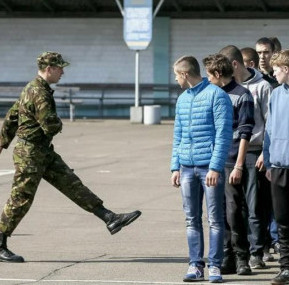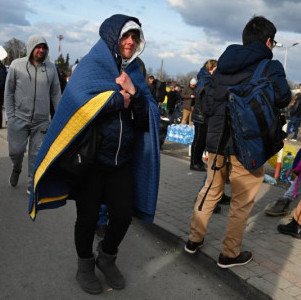In so doing, we speak not only about those who were killed or wounded “in action”. Yet, as of July 24 they totaled respectively 4,638 and at least 29,978 people (for comparison: the attack on the World Trade Center in New-York that was a formal reason of “the Crusade against the Evil” killed according to various data 2819 – 2998 people and injured more than 6291).
In fact the price paid by the USA for the effort of the White House to impose its will on the world is much higher. This conclusion follows from articles published in the American press in late May-early June.
In particular, the newspapers referring to official sources reported that in 2007 the rate of Posttraumatic Stress Disorder (PTSD) incidence in US militaries increased almost by 50 per cent. In absolute figures it amounts to about 14,000 sick (versus 9500 in 2006 and 1632 in 2003). More than 10,000 new patients were recorded in the Army (vs more than 6800 in 2006), more than 2114 new patients in the Marine Corps (vs 1366) and 1000 new patients in the AF and Navy each. Totally during 2003 – 2007 the disorder was diagnosed in about 40,000 people. As it turned out, the PTSD is most frequently observed in the Army and Martine Corps that bear the main burden of war in Iraq and Afghanistan. According to the US Office of the Surgeon General, during 2003-2007 the symptoms of the PTSD were observed in 28,365 militaries of the Army and 5,581 of the Marine Corps.
Experts point out that the consequences of “the mental disorder” are more serious, and the extent of the problem is significantly wider that it seemed earlier. John Fortunato, a famous military psychotherapist, emphasized in this connection that “the PTSD has no less grave negative impact on the health than the brain trauma or shrapnel wound”. As quoted to Lt.-General Eric B. Schoomaker, the Surgeon General of the US Army, “in fact nobody knows actual incidence of this disorder because many servicemen who have symptoms of the stress including hyposomnia, hallucinations and panic prefer to avoid official medical examination”.
According to moderate estimates of the US Department of Defense, 20-30 per cent of veterans who returned home from the action area suffer nervous and mental disorders. Basing on this percentage, certain independent researchers have come to a conclusion that the point at issue is at least 300,000 servicemen. In turn, the US Department of Veterans Affairs asserts that it has files of 120,000 veterans of Iraq and Afghanistan containing at least preliminary repots on nervous or mental illness, in so doing, the PTSD was observed in about 60,000 GIs.
Speaking about the situation, Lt.-General Eric B. Schoomaker, the Surgeon General of the US Army, allegedly recognized: “I don’t think that currently we have good indicators”. But starting his assessment well he ended it badly. Showing spirit de corps he tried to explain the growing trend of negative data first of all “by the use of a electronic medical records system commissioned in 2004 that provides for storing and monitoring larger volumes of information, as well as by improved skills of personnel-in-charge of enlisted man and officer medical records”.
However, it is well-known that you cannot hide a cat in a bag. And it just happens today. Approximately at the same time when the Surgeon General of the US Army spoke about the advantages of the new record system, Colonel Elspeth Ritchie, Psychiatry Consultant to the US Army Surgeon General, unambiguously indicated absolutely different factors as main reasons of the illness. At the press-conference in the Pentagon she claimed that the mental health of service members deteriorates due to on-going military campaign in the Middle East when militaries have to make long-term and multiple tours of duty to the zones of conflict, live separated from their homes, suffer impact of frightening and horrible war realties including harmful influence of the face of death. The words of the Consultant are confirmed with the information that every eighth military of combat units in Iraq (12.5 %) and every sixth military in Afghanistan (16.7%) take physician-prescribed antidepressants or sleeping pills trying to get rid of nightmares.
The problem is aggravated by associated “sensitive moments” that are gently concealed by the US authorities. In particular according to the data obtained “by force” by veteran support organizations from the Pentagon, since 2003 more than 43,000 medically unfit persons have been sent to the Middle East to participate in combat operations. The statistics on such persons is as follows: 10,854 in 2003, 5,397 in 2005 and 9,140 in 2007 (totally 1,600,000 US militaries saw duty in the zones of conflict). In 2007, daily expenditures on the Iraqi war amounted to 341.1 million Dollars (re. National Priorities), while in the same year appropriation from the US DoD budget for the physiological and mental aid to sick soldiers and officers totaled …33 million Dollars only.
Meanwhile the Daily Telegraph reported in June 2008 that US Defense Secretary Robert Gates “favored” an idea to award one of the most respectful decorations, the Purple Heart, to servicemen with the PTSD.
May be this step is more simple and less expensive, and taken almost after Hippocrates who said that the physician should give …reasonable reassurance to the sick but more to the point he should keep him in the dark about what awaits him and what endangers him.









